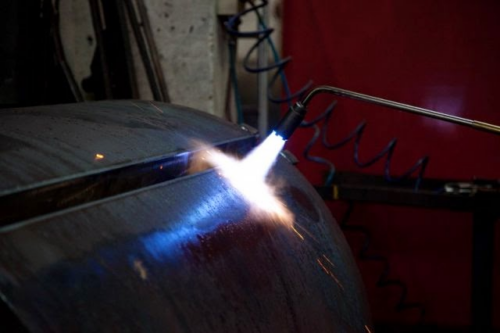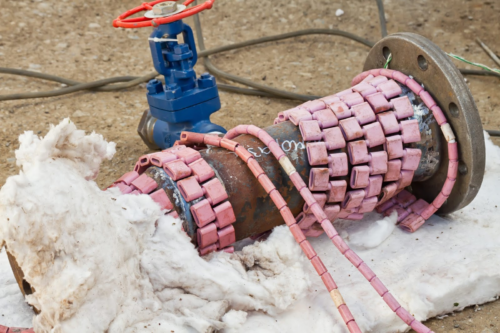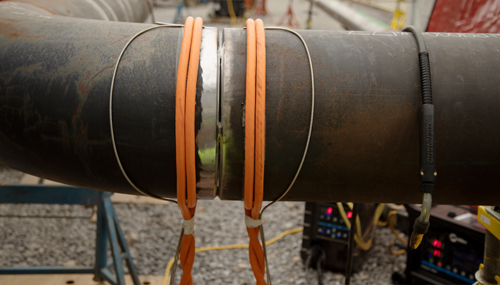Table of Contents
TogglePreheat Welding Basics
Thermal expansion and contraction are universal phenomena, and sudden temperature differences can lead to structural failure and fractures. In welding, controlling temperature variations is critical, especially when working with thick materials, high-carbon steels, or in cold environments. Preheating plays a vital role in ensuring weld integrity by applying heat to the base metal before welding, thereby reducing defects and enhancing durability. Proper preheating minimizes thermal shock, prevents hydrogen-induced cracking, and avoids excessive hardness in the heat-affected zone. By managing these thermal principles effectively, welders can achieve stable and reliable joints. This guide explores the key functions of preheating, its impact on welding, and best practices for optimal results.
Is Preheating Necessary and When to Use It?
Preheating is not always required, but it becomes essential in specific welding scenarios where material properties and welding conditions demand extra precautions. The necessity of preheating depends on several factors:
- Fragile Material Types: High-carbon steels, low-alloy steels, and cast iron are more prone to cracking and typically require preheating.
- Material Thickness: Thicker materials cool down rapidly, increasing the risk of thermal stress and cracking.
- Welding Environment: Cold ambient temperatures can cause rapid cooling, making preheating necessary to maintain consistent weld quality.
- Welding Process: Some processes, such as shielded metal arc welding (SMAW) and gas metal arc welding (GMAW), may require preheating to enhance weld penetration and fusion.
- Service Conditions: Welded components exposed to heavy loads, extreme temperatures, or cyclic stresses benefit from preheating to improve longevity and performance.
Preheat Welding Methods
There are several common methods used for preheating in welding, each with its advantages, limitations, and working process:
Oxy-Fuel Heating
- Process: A torch mixes oxygen with a fuel gas (acetylene or propane) to create an open flame, which is applied directly to the metal surface in a sweeping motion. Just like roasting beef, this method is very easy.
- Pros: Easy to set up, cost-effective, and suitable for localized heating.
- Cons: Uneven heating, potential overheating, and requires skilled operation to avoid oxidation.

Induction Heating
- Process: A coil is placed around or near the workpiece, and an alternating current generates an electromagnetic field, inducing heat within the metal without direct contact. This method is particularly effective for preheating pipes, as the coil can be adjusted to fit different pipe diameters. It also offers precise temperature control, with some equipment featuring digital recording capabilities to document preheat temperatures for quality assurance.
- Pros: Provides uniform and controlled heating, fast heating rates, and energy-efficient.
- Cons: Requires specialized equipment, higher initial investment, and limited to conductive materials.
Resistance Heating
- Process: Electrical resistance heating pads or blankets (acting as a medium) are placed on the surface of the workpiece, converting electrical energy into heat to raise the temperature gradually.
- Pros: Precise temperature control, ideal for preheating large workpieces, and consistent heat distribution.
- Cons: Requires dedicated heating elements, slow heating process requiring the installation of heating pads or blankets, and limited portability.
 Furnace Heating
Furnace Heating
- Process: The entire workpiece is placed inside a temperature-controlled furnace, where it is heated to the required preheat temperature and held for a specified duration before welding.
- Pros: Ensures uniform heating for complex components, ideal for batch processing, and reduces localized stress concentrations.
- Cons: Expensive, requires significant space, and not practical for on-site welding.
Radiant Heating
- Process: Infrared heating elements emit thermal radiation, which is absorbed by the metal surface, gradually increasing its temperature without direct contact.
- Pros: Non-contact heating, suitable for thin materials, and provides gradual temperature increase.
- Cons: Limited penetration depth, slower heating time, and less effective for thicker metals.
For individual hobbyist welders, simpler and cost-effective methods like oxy-fuel heating are often preferred due to their ease of use and affordability. On the other hand, for large-scale industrial applications requiring consistent and controlled heating, methods such as induction or resistance heating are more suitable, ensuring uniform preheating for high production volumes.
FAQs on Preheating in Welding
Q1: Can I preheat a weld area to get better penetration?
Yes preheating may help somewhat, but it’s not going to fundamentally change the physics of the weld. If the base metal isn’t melting properly, preheating alone won’t fix the issue—it may just result in metal being deposited on top without true fusion, much like pouring pancake batter onto a cold pan.
Q2: How to preheat aluminum in welding?
Before preheating, clean the metal surface thoroughly to remove oil, rust, and oxide layers. Any contaminants can lead to defects in the weld. Preheating temperature should not exceed 230°F (110°C) to avoid altering aluminum’s mechanical properties. Use an infrared thermometer or temperature-indicating crayons to monitor heat levels. Methods such as hot air guns, infrared heaters, or controlled ovens are effective for preheating aluminum. Preheating helps improve arc stability, reduce thermal shock, and prevent cracking in thicker aluminum sections.
Q3: What are the benefits of preheating?
Preheating helps when welding metals of different thicknesses. The thinner piece melts faster than the thicker one, making fusion hard. Heating the thicker casting to 200 degrees evens out the heat, making welding easier. It also removes moisture, reducing porosity and improving weld quality.

